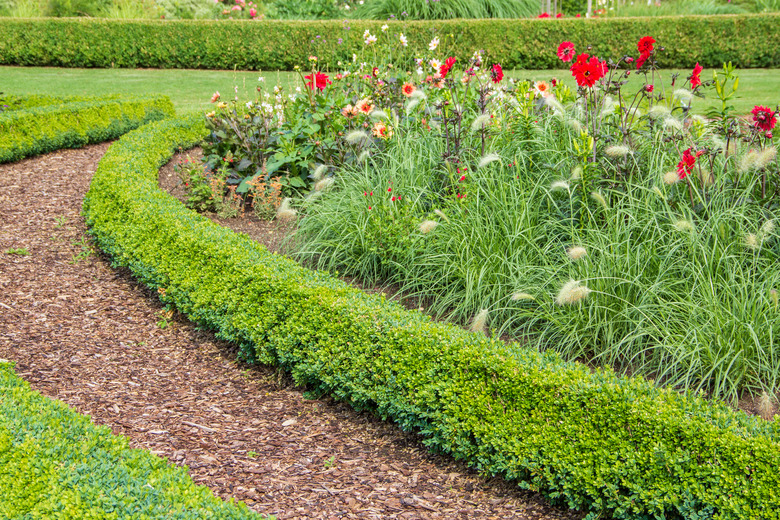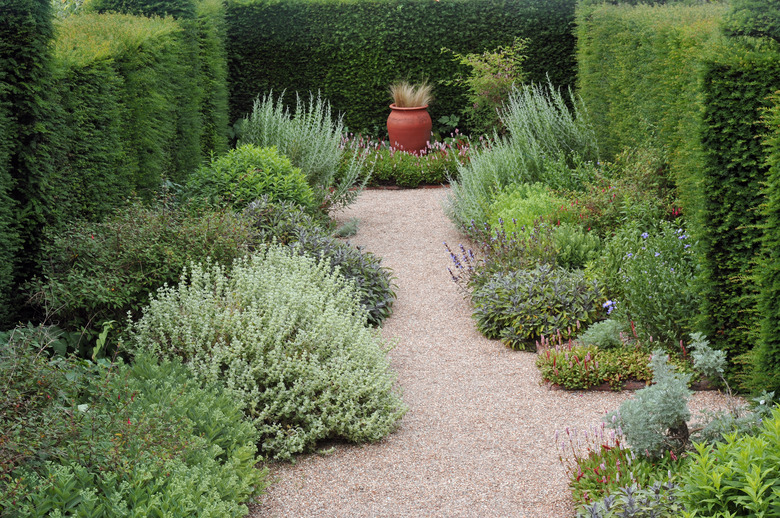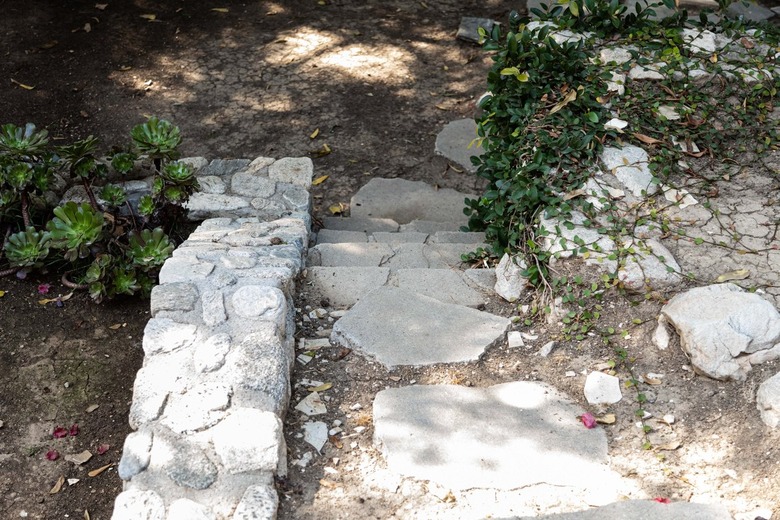Easy Walkways For Covering Muddy Paths
Covering muddy paths can prevent common problems, such as having to figure out the best way to get down the path and inside the house without taking the mud inside with you. Muddy paths can also be slippery and dangerous. Growing grass isn't always an option, but you can cover the path with different materials, including mulch or gravel, quickly and easily. Your choice of coverings improves the look, gives you more traction and keeps mud off your shoes.
Mulch Walkway Options
In your flowerbed, landscape mulch helps hold the moisture in the soil and prevents weeds from growing. On a muddy path, it creates a barrier between your feet and the soil. Nearly any type of mulch works for covering muddy paths, including shredded mulch, wood chips or rubber mulch.
For a quick fix, simply pour the mulch over the muddy areas, making it 1 1/2 to 2 inches deep. Digging down to create room for deeper mulch can help it stay in place and allows you to have deeper mulch without making the pathway a large mound. Some will spill out the sides of the path. For a more permanent fix, add landscape edging along the sides before putting down the mulch to help contain the mulch. Add more mulch at least once a year to keep the path covered.
Gravel or Rock Walkways
Gravel provides another quick fix for covering muddy paths. For immediate coverage, just pour the gravel onto the path at least 1 1/2 inches deep. Like mulch, some will fall off the sides of the path and travel into your landscaping, but installing edging helps prevent this. Install the edging first before you pour the rock onto the pathway. Stone edging helps continue the natural look, while plastic edging is inexpensive and easy to install.
Pea gravel is gentle on your bare feet, but it can get caught in shoe treads and end up inside your house. Larger gravel, such as 3/4 inch, stays in place well in wet areas, but it may present a challenge for gaining traction or maintaining balance, particularly if you're wearing heels. If you fear the gravel will work its way down into the mud, lay landscaping fabric before you pour on the gravel.
Stepping Stone Walkways
Although they take longer to install than mulch or gravel, stepping stones don't take much work when covering muddy paths. For the best results, dig down to remove some of the dirt. Pour a couple of inches of sand over the muddy path; then push the stepping stones into the sand.
For a quicker fix, just push the stepping stones firmly into the damp ground, twisting slightly as you push. Secure them by tapping around the edges with a rubber mallet to sink them deeper into the soil. Place them close enough together that you can easily step from one to another without stepping in the mud. You can also fill the gaps with pea gravel to completely cover the mud.
Considerations for Covering Muddy Paths
When cost is a factor as well as the need for a quick fix, mulch is probably the best choice. Stepping stones are usually the most expensive, depending on how many stepping stones you use. When time allows, explore other permanent, but more labor-intensive, options such as interlocking pavers or poured concrete for your pathway.



